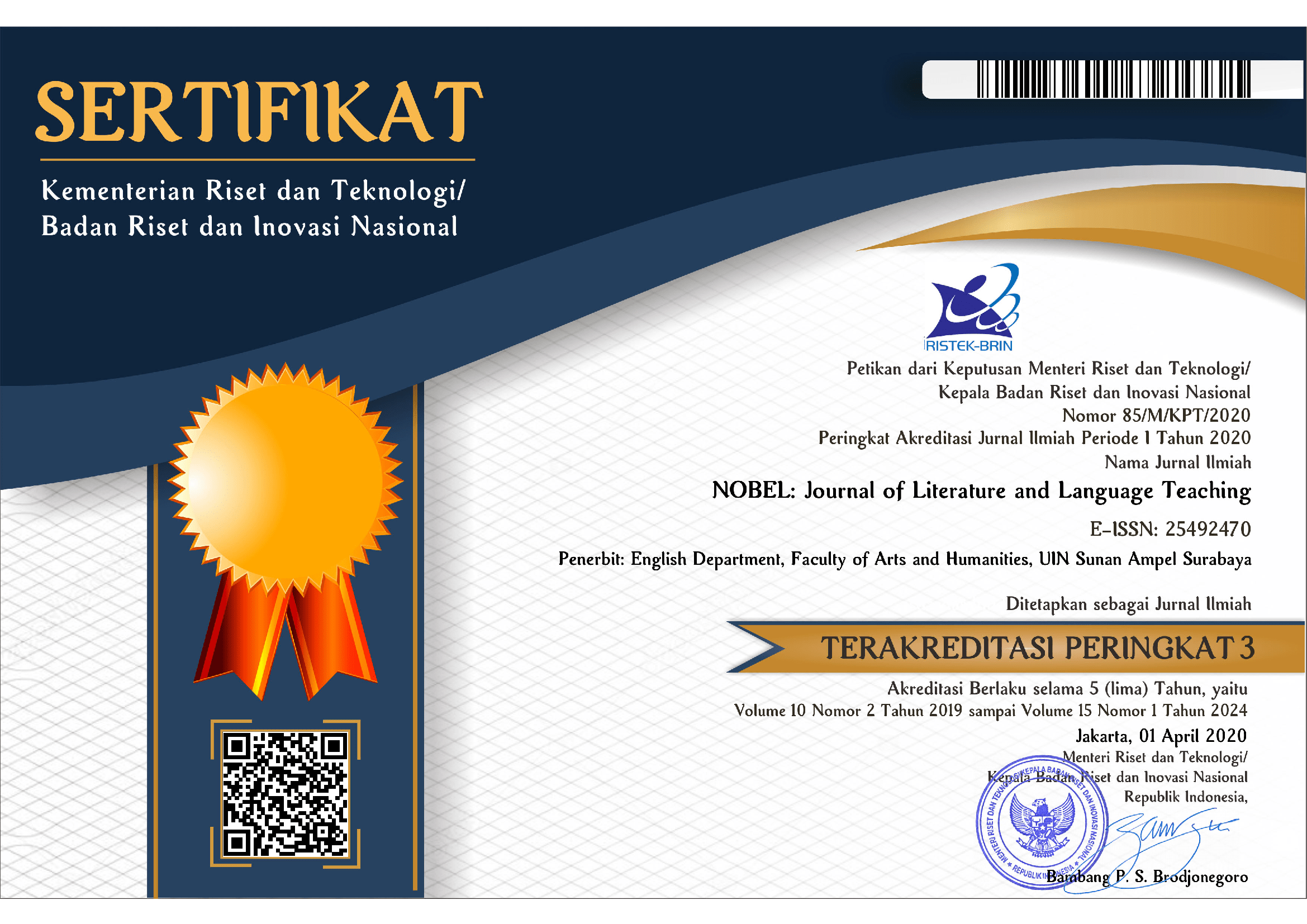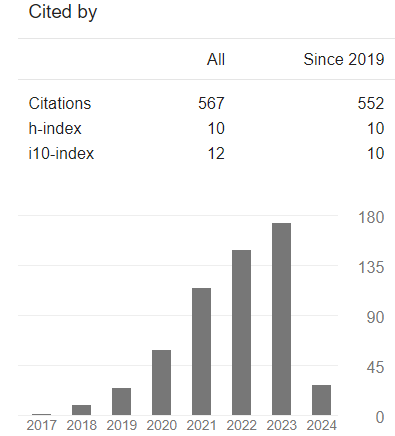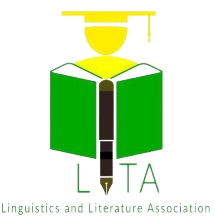Representation of Muslim Women in Online News: Study of Critical Discourse Analysis
DOI:
https://doi.org/10.15642/NOBEL.2021.12.2.214-227Keywords:
Corpus-Based Critical Discourse Analysis; topic modeling; world view of IslamAbstract
This study mainly investigates the representation of Muslim women in online news. This article analyzes the data using Corpus Linguistics combined with Critical Discourse analysis (CL-CDA) supported by the topic modeling method. The data used are the news articles with approximately 50 thousand-word tokens. The selected news is news published in 2013-2021. The news was chosen because it can represent the social view of Muslim women since the news has the power to influence people’s perspectives. The results show that the direction of media representation towards Muslim women is gradually leading to a better direction. Factors that bring a negative image to Muslim women are generally due to the “black fashion,” which is associated with “terrorism.” However, modernization makes today’s Muslim women more critical. They have the freedom to express their opinion, take important positions, and support feminism and gender equality movements. The use of the niqab is generally prohibited in European countries because it is considered an extremist. But, The COVID-19 pandemic has also changed the image of the niqab to be more accepted in society. Niqab users are now seen as “face covering experts,” which attracts a lot of people.
Downloads
References
Abbas, T. (2004). After 9/11: British South Asian muslims, Islamophobia, multiculturalism, and the state. The American Journal of Islamic Social Sciences, 21(3), 26–38. https://doi.org/10.35632/ajis.v21i3.506
Belford, M., & Greene, D. (2020). Ensemble topic modeling using weighted term co-associations. Expert Systems with Applications, 161(2020), 1–13. https://doi.org/10.1016/j.eswa.2020.113709
Bleich, E. (2012). Defining and researching Islamophobia. Review of Middle East Studies, 46(2), 180–189. http://www.jstor.org/stable/41940895
Chak, F. (2012). Islam, religion and society: The movement for Pakistan. The International Journal of Religion and Spirituality in Society, 2(1), 59-70. https://doi.org/10.18848/2154-8633/CGP/v02i01/51197.
Cheng, W. (2013). Corpus-based linguistic approaches to critical discourse analysis. In The Encyclopedia of Applied Linguistics (Chapelle CA, pp. 1353–1360). Oxford: Blackwell.
Dalton, E. (2019). A feminist critical discourse analysis of sexual harassment in the Japanese political and media worlds. Women’s Studies International Forum, 77(2019), 1–9. https://doi.org/10.1016/j.wsif.2019.102276
D’Angelo, P., & Lombard, M. (2008). The power of the press: The effects of press frames in political campaign news on media perceptions. Atlantic Journal of Communication, 16(1), 1-32. https://doi.org/10.1080/15456870701647391
Dijk, T. A. V. (1995). Power and the news media. In Political Communication and Action (pp. 9–36). Cresskill, NJ: Hampton Press.
Fairclough, N. (1995). Critical discourse analysis: The critical study of language. Longman.
Ge, Y., & Wang, H. (2018). The representation of ordinary people: A discursive study of identities constructed in China’s news reports of social con?icts. Discourse, Context & Media, 26(2018), 52–63. https://doi.org/10.1016/j.dcm.2018.01.002
Hasin, F., Hasan, A. K. M. B., & Musa, H. (2018). Women empowerment model: Strategies to overcome challenges. Journal of Fundamental and Applied Sciences, 10(1S), 1068–1083. https://doi.org/10.4314/jfas.v10i1s.78
Hidayah, R., & Milal, D. (2016). Ideal identity construction in beauty product advertisement of Garnier. NOBEL: Journal of Literature and Language Teaching, 7(2), 120–136. https://doi.org/10.15642/NOBEL.2016.7.2.120-136
Lin, C., & He, Y. (2009). Joint sentiment/topic model for sentiment analysis. 18th Conference on Information and Knowledge Management, 375–384. https://doi.org/10.1145/1645953.1646003
McDonald, P., & Charlesworth, S. (2013). Framing sexual harassment through media representations. Women’s Studies International Forum, 37(2013), 95-103. https://doi.org/10.1016/j.wsif.2012.11.003
Nity, P., & Singh, G. (2017). Role and impact of media in society: A sociological approach with respect to demonetisation. IMPACT: International Journal of Research in Humanities, Arts and Literature, 5(10), 127-136. http://www.impactjournals.us/
Palmer, C., & Bolderston, A. (2006). A brief introduction to qualitative research. The Canadian Journal of Medical Radiation Technology, 37(1), 16–19. https://doi.org/10.1016/S0820-5930(09)60112-2
Schirrmacher, C. (2008). Islam and society: Sharia law—Jihad—Women in Islam (Vol. 4). Verlag für Kultur und Wissenschaft.
Stilman, A. (1997). Grammatically correct: The writer’s essential guide to punctuation, spelling, style, usage, and grammar. Writer’s Digest Books.
Törnberg, A., & Törnberg, P. (2016). Muslims in social media discourse_ Combining topic modeling and critical discourse analysis. Discourse, Context and Media, 13(Part B), 132-142. https://doi.org/10.1016/j.dcm.2016.04.003
Wernholm, M., & Reneland-Forsman, L. (2019). Children’s representation of self in social media communities. Learning, Culture and Social Interaction, 23(2019), 1–15. https://doi.org/10.1016/j.lcsi.2019.100346
Yasmin, M. (2021). Asymmetrical gendered crime reporting and its influence on readers: A case study of Pakistani English newspapers. Heliyon, 7(8), 1-6. https://doi.org/10.1016/j.heliyon.2021.e07862
Zúquete, J. P. (2008). The European extreme-right and Islam: New directions? Journal of Political Ideologies, 13(3), 321-344. https://doi.org/10.1080/13569310802377019
Downloads
Published
How to Cite
Issue
Section
License
Copyright (c) 2021 NOBEL: Journal of Literature and Language Teaching

This work is licensed under a Creative Commons Attribution 4.0 International License.







